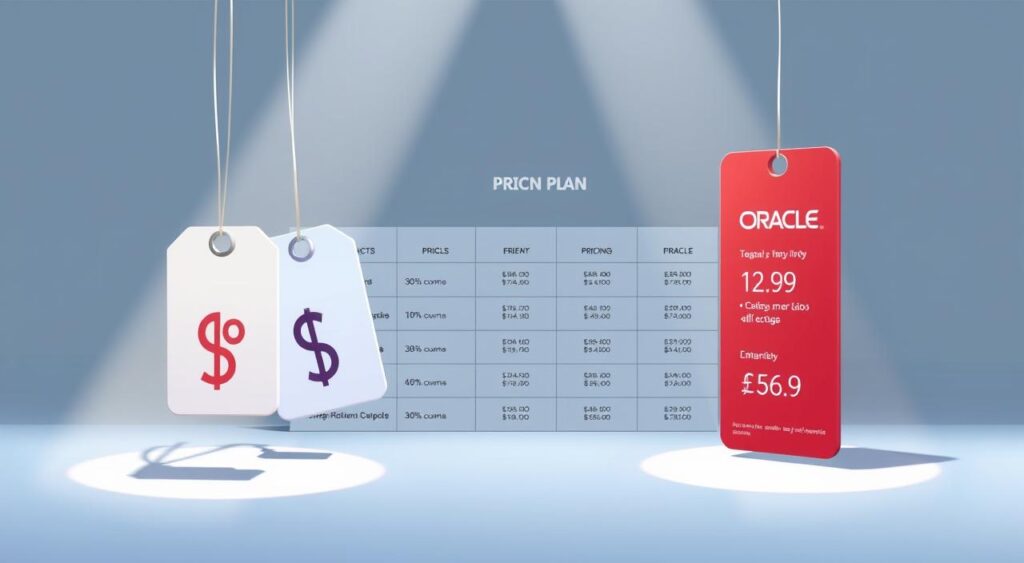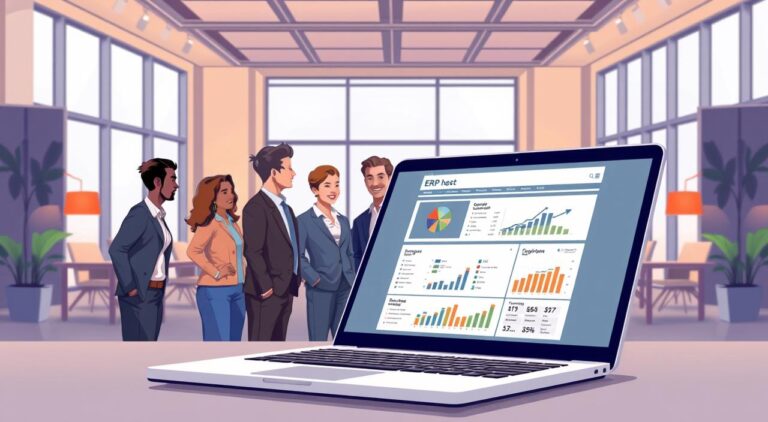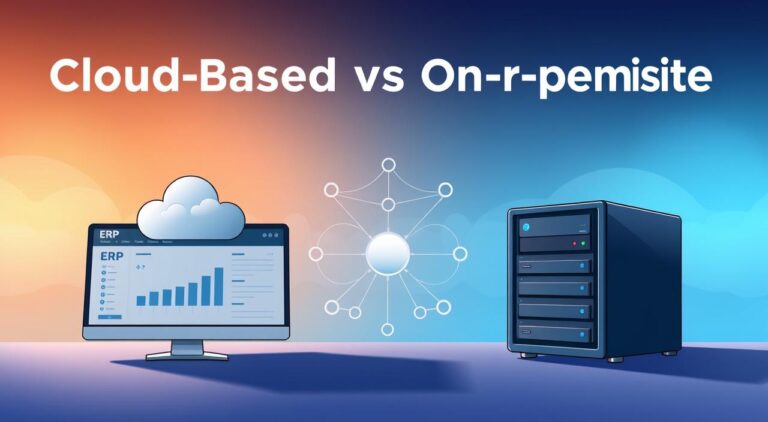Odoo vs SAP vs Oracle: Which ERP Is Right for You?
The landscape of enterprise resource planning (ERP) systems has become increasingly competitive, particularly with Odoo, SAP, and Oracle leading the charge. Each solution is meticulously designed to address unique business needs, streamlining operations, and enhancing efficiency. Choosing the right ERP software is crucial for optimizing management and facilitating long-term growth.
A thorough comparison of Odoo vs SAP vs Oracle will empower organizations to make informed decisions based on specific business requirements, budget considerations, and scalability needs. By delving into the complexities and advantages of these platforms, decision-makers will gain valuable insights essential for strategic implementation of enterprise resource planning systems.
Key Takeaways
- Understanding the strengths and weaknesses of Odoo, SAP, and Oracle enhances decision-making.
- Each ERP software offers distinct functionalities suitable for different business sizes.
- Pricing models and hidden costs should be central to your selection process.
- User experience varies significantly; consider the interface that best fits your team.
- Customization and scalability are critical for future growth and adaptability.
- Integration capabilities with existing systems can greatly impact operational efficiency.
- Strong customer support and resources play a vital role in successful ERP adoption.
Overview of Odoo, SAP, and Oracle ERP Systems
In today’s competitive business landscape, choosing the right ERP solution is crucial for operational success. Odoo ERP, SAP ERP, and Oracle ERP represent three powerful tools that cater to different business needs and industries. Understanding their origins and key features can guide businesses in making informed decisions.
The Origins of Each ERP Solution
Odoo originated as an open-source ERP designed to streamline business management with various integrated applications. SAP began focusing on manufacturing operations and has evolved to serve a wide range of industries. Oracle, with its extensive history in enterprise software, has embraced cloud technology, offering robust ERP solutions that cater to complex business requirements.
Key Features of Each Platform
Each ERP system offers distinct key features that address specific needs:
- Odoo ERP provides an extensive suite of applications, including CRM, project management, and inventory control.
- SAP ERP is known for its comprehensive modules targeting supply chain, finance, and human resources.
- Oracle ERP emphasizes advanced analytics and reporting capabilities integrated within its cloud services.
Target Industries and Businesses
The adaptability of these ERP solutions ensures they meet varying industry needs:
- Odoo ERP caters to small and medium-sized enterprises across diverse sectors like retail and services.
- SAP ERP serves large corporations, especially in manufacturing, automotive, and pharmaceuticals.
- Oracle ERP targets enterprises demanding intricate financial management and compliance across industries such as finance and telecommunications.
Pricing Comparisons: Odoo vs SAP vs Oracle
Understanding the intricacies of ERP pricing proves essential for businesses selecting between Odoo, SAP, and Oracle. Each platform presents unique licensing models that impact cost structures significantly. Carefully analyzing these pricing strategies clarifies how well they align with specific business needs.
Licensing Models Explained
Odoo implements a subscription-based model, charging approximately $24.90 per month for each user, alongside customized pricing for specialized requirements. Conversely, SAP adopts a consumption-based pricing model, which can lead to unpredictable expenses and makes budget planning challenging. Oracle’s pricing varies according to selected features, offering flexibility yet complexity in understanding the overall costs.
Hidden Costs and Implementation Fees
Beyond initial ERP pricing, hidden costs often arise during the implementation phase. Companies should consider expenses related to:
- Training and support services
- Data migration and integration
- Ongoing maintenance and upgrades
These factors can significantly influence the overall investment in an ERP system, emphasizing the need for a comprehensive financial assessment.
Total Cost of Ownership Considerations
Calculating the total cost of ownership (TCO) involves more than just initial costs. Businesses must evaluate long-term impacts of ERP systems. Factors influencing TCO include:
- Licensing models and payment structures
- Operational efficiencies gained or lost
- Scalability for future growth
Understanding these aspects helps in selecting an ERP solution that not only fits current needs but also accommodates future requirements effectively.

User Experience: Interface and Usability
The overall user experience plays a crucial role in the effectiveness of any ERP system. An engaging ERP interface not only enhances usability but also increases user satisfaction across various industries. Let’s explore how Odoo, SAP, and Oracle approach user experience, focusing on design and functionality.
Odoo’s Intuitive Design
Odoo design stands out for its simplicity and ease of navigation. Users appreciate the clean layout, which caters to both technical and non-technical individuals. The modular nature allows businesses to customize their ERP interface seamlessly. This flexibility greatly contributes to a positive user experience, empowering employees to utilize only what they need.
SAP’s Comprehensive Functionality
SAP functionality offers a robust toolkit tailored for larger enterprises. Although the depth of features can sometimes complicate the interface, SAP emphasizes usability through various enhancements. The extensive dashboards and customizable reports provide users with meaningful insights, making it easier to manage complex operations. Proper training and support can significantly boost the overall user experience within the system.
Oracle’s User Experience Ratings
Oracle consistently receives high user experience ratings, thanks to its focus on intuitive design. Feedback often highlights the effectiveness of its ERP interface in streamlining processes across different functions. The user-friendly elements help organizations maximize their ERP investments. For those interested in insights about investing in home decor technology, check out this informative article.

Customization and Scalability
In the competitive landscape of enterprise resource planning (ERP), the ability to customize and scale applications is critical for businesses of all sizes. ERP customization allows companies to tailor solutions specifically to their operational needs, supporting efficient processes. Each ERP system offers distinct advantages in this area, accommodating various business models and growth trajectories.
Odoo’s Flexible Modules
Odoo stands out with its open-source platform, promoting extensive customization options. Businesses benefit from a modular architecture that supports scalable growth. Organizations can easily add or remove applications as their needs evolve, making Odoo a popular choice for those seeking flexibility.
SAP’s Enterprise Solutions
SAP’s ERP solutions are renowned for their robust capabilities designed for large enterprises. With a focus on scalability, businesses can customize workflows and integrate various functions seamlessly. This comprehensive approach enables organizations to maintain efficiency even as they expand, ensuring that their systems grow alongside their operational demands.
Oracle’s Customization Capabilities
Oracle provides powerful customization features, allowing businesses to develop tailored solutions that meet specific requirements. Its platform offers advanced tools for scalability, enabling firms to adapt to changing market conditions. This adaptability ensures that organizations using Oracle remain agile, addressing new challenges effectively.
Integration and Compatibility
As businesses increasingly rely on various software solutions, the importance of ERP integration and compatibility cannot be understated. Companies seek systems that can seamlessly connect with existing tools. Exploring the integration capabilities of Odoo, SAP, and Oracle reveals significant differences in how these three platforms handle third-party integrations and ecosystem connections.
Third-Party Integrations with Odoo
Odoo stands out with its robust third-party integrations. The platform allows easy connections to payment gateways, e-commerce platforms, and various business applications, promoting smooth workflows. Organizations benefit from Odoo’s API-friendly approach, enabling them to customize and enhance functionality according to their needs. This flexibility ensures that businesses can maintain a cohesive technology stack without significant disruptions.
SAP’s Ecosystem Connectivity
SAP focuses on providing strong ecosystem connections. It excels in integrating with a wide range of applications found in enterprise environments. SAP’s compatibility with other software solutions positions it as a robust choice for large organizations requiring extensive ERP integration. This interconnectedness facilitates data exchange, ensuring that all parts of the business operate effectively and efficiently.
Oracle’s Integration Framework
Oracle offers a comprehensive integration framework that supports various third-party applications. The technology enables organizations to connect different systems, ensuring smooth data transfers and operational continuity. Oracle’s emphasis on compatibility helps businesses leverage existing tools while maximizing the return on investment in their ERP systems. This strategic approach allows teams to collaborate more effectively across different departments and functions.
Customer Support and Community Resources
Effective customer support and robust community resources play a crucial role in maximizing the benefits of any ERP system. Odoo, SAP, and Oracle each offer unique support frameworks to ensure users can navigate their systems with ease. Understanding these options helps businesses make informed choices.
Odoo’s Community and Documentation
Odoo stands out due to its vibrant community and extensive documentation. Users find it valuable to engage with community resources that provide solutions to common issues. The platform offers a wealth of written guides, FAQs, and forums where questions can be posed and answered by fellow users. This fosters a supportive environment that enhances the overall experience. Furthermore, the availability of video tutorials and educational materials boosts user confidence in troubleshooting and utilizing the software effectively.
SAP’s Customer Service Options
SAP provides a comprehensive range of customer support avenues. Customers can access tailored support plans designed to address specific business needs. SAP offers 24/7 technical support, ensuring that organizations can resolve issues promptly. The company also emphasizes proactive service through regular training sessions and updates, which helps clients maximize their ERP investment. This level of dedicated customer support is critical for organizations heavily reliant on their ERP systems.
Oracle’s Support Structure
Oracle’s support structure includes a combination of online resources, direct customer assistance, and training programs. Customers can benefit from detailed documentation and user forums that cover a broad spectrum of topics. Additionally, Oracle’s customer support retains a focus on providing personalized assistance tailored to complex business demands. Organizations appreciate the ERP support options, as these ensure minimal disruption and optimized system usage.
Making the Decision: Choosing Your ERP System
When it comes to choosing an ERP system, it’s crucial to start with a detailed understanding of your business needs. Conducting a comprehensive business needs assessment will help identify the specific functionalities required, such as inventory management, customer relationship management, or financial reporting. Taking the time to analyze internal processes not only clarifies operational goals but also ensures that the chosen system aligns with the company’s strategic direction.
In addition to current requirements, evaluating the long-term ERP benefits is essential. An effective ERP system should scale alongside your business, adapting to future needs as market conditions change. Consider how each platform—Odoo, SAP, or Oracle—can evolve and provide value over time. For example, Odoo’s modular approach may offer flexibility, while SAP’s extensive ecosystem can support enterprise-level growth.
As you finalize your decision, it’s important to weigh the recommendations for buyers. Focus on selecting a solution that not only meets short-term demands but also supports long-term success. Whether it’s through Odoo’s customization options, SAP’s robust functionality, or Oracle’s advanced features, ensure that your choice empowers your business for years to come.




